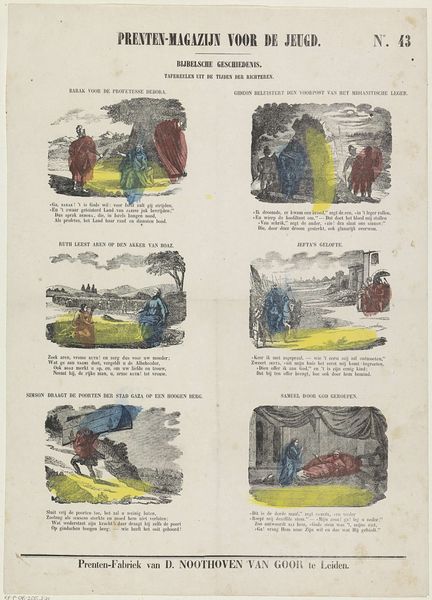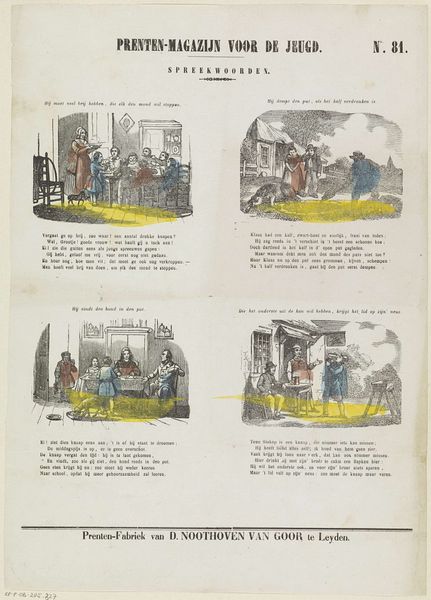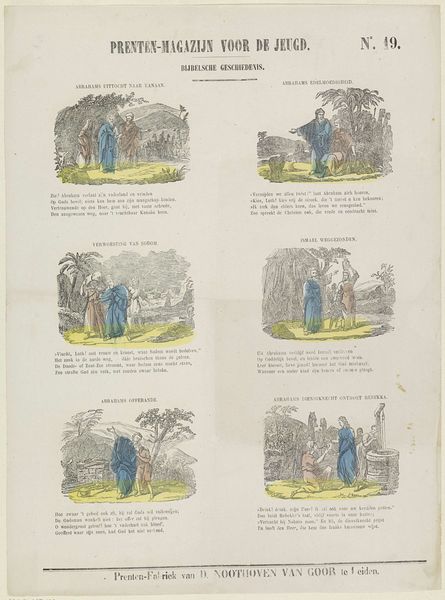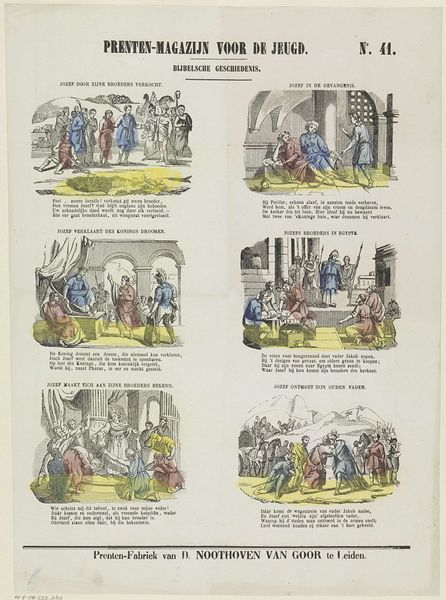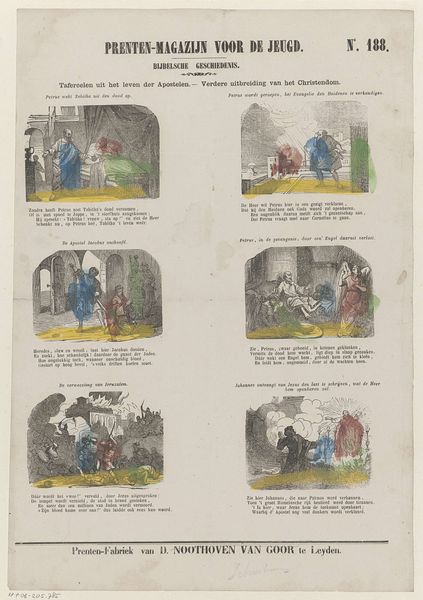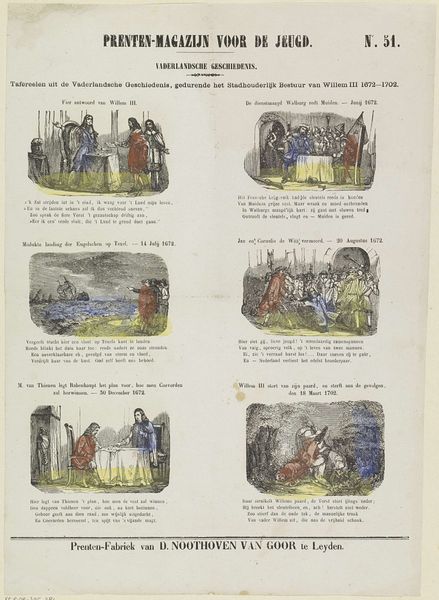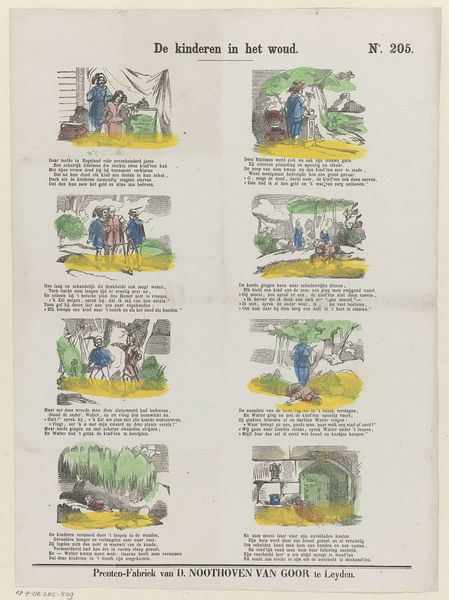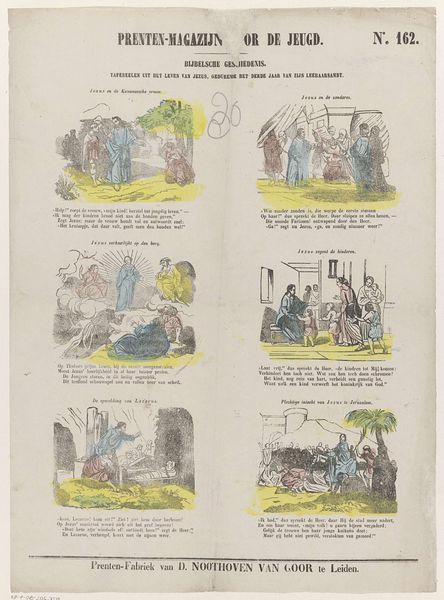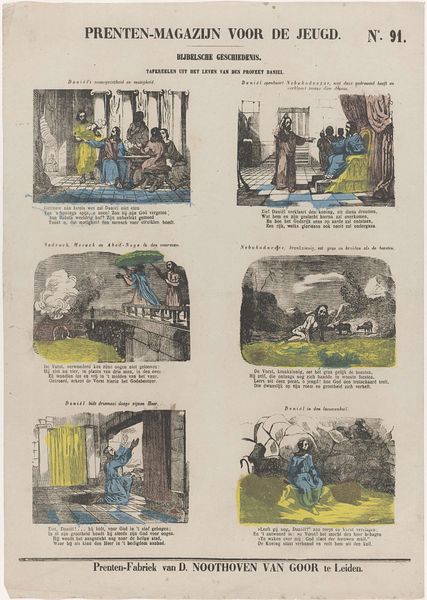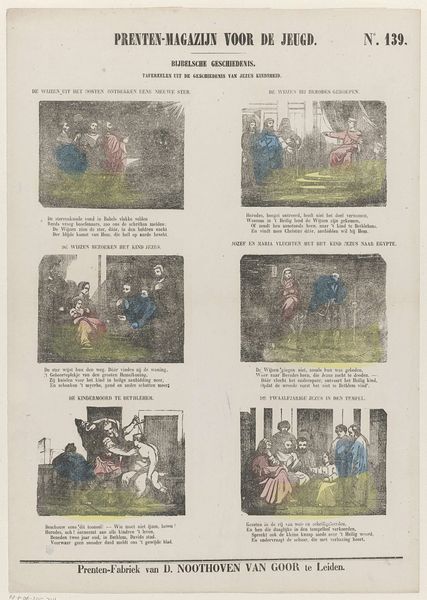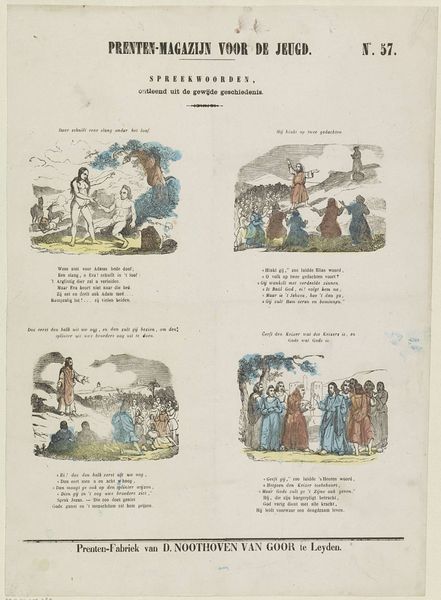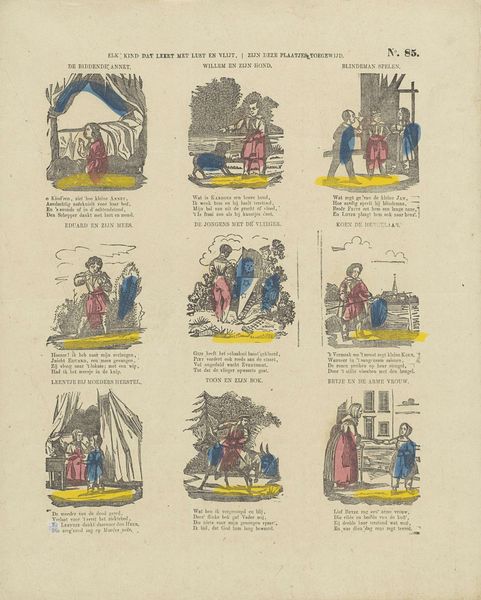
lithograph, print
#
narrative-art
#
dutch-golden-age
#
lithograph
# print
#
genre-painting
#
academic-art
Dimensions: height 419 mm, width 294 mm
Copyright: Rijks Museum: Open Domain
Curator: This lithograph from between 1850 and 1881, entitled "Tafereelen uit de regeering van koning David," translates to Scenes from the Reign of King David. It's quite striking how the artist, Dirk Noothoven van Goor, uses a series of vignettes to depict biblical narrative. Editor: My first impression is that the combination of the panel layout and relatively muted palette feels antiquated but the individual images have an expressive quality, like medieval tapestries made modern, however strange that sounds. Curator: Precisely. The layout encourages a reading of the work as a unified whole and each of the frames shows meticulous attention to detail. Editor: Agreed, and when thinking of historical context, one could assume that presenting biblical stories in such an accessible format must have been an attempt to popularize religious teachings, perhaps for educational purposes, especially within a time of shifting social landscapes and increasing secularization. Each picture seems to isolate a distinct moral lesson about power, allegiance, and faith. Curator: Absolutely. Noothoven van Goor's adherence to form through repetition enhances the graphic nature of the piece. The lithographic medium lends itself well to reproducing intricate designs with consistency, achieving a wide circulation and distribution of religious subjects, very much aligned to contemporary tastes of Academic Art. Editor: True, but also I consider the implications of disseminating these visual stories on public perceptions and behaviours in its contemporary period. Which narratives are chosen, how are the figures depicted - What impact did it have on society? The choice to emphasize certain episodes from David’s life certainly must have aimed to encourage reflection and perhaps reinforce societal norms through moral exemplars. Curator: It is quite ingenious how form reflects function. Through simplifying narratives and delivering them in series, viewers find themselves engaging in an intimate process of reading the pictures while also following a religious curriculum. Editor: Indeed. Ultimately, this series not only tells the tales, but provides a fascinating portal into how visual culture serves social and political roles through historical periods, prompting many contemporary avenues for intersectional critique. Curator: A very well said, thoughtful engagement to conclude this viewing experience.
Comments
No comments
Be the first to comment and join the conversation on the ultimate creative platform.
